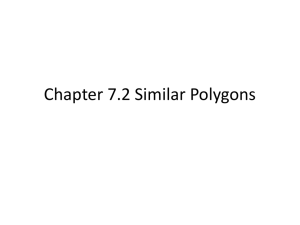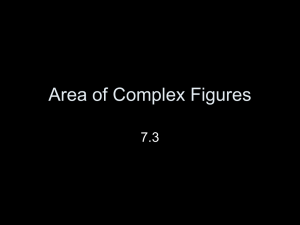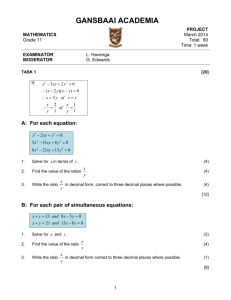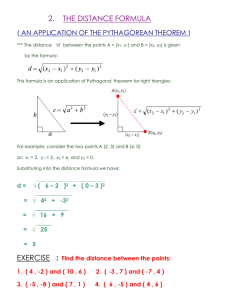Review Sheet for Exam 2
advertisement
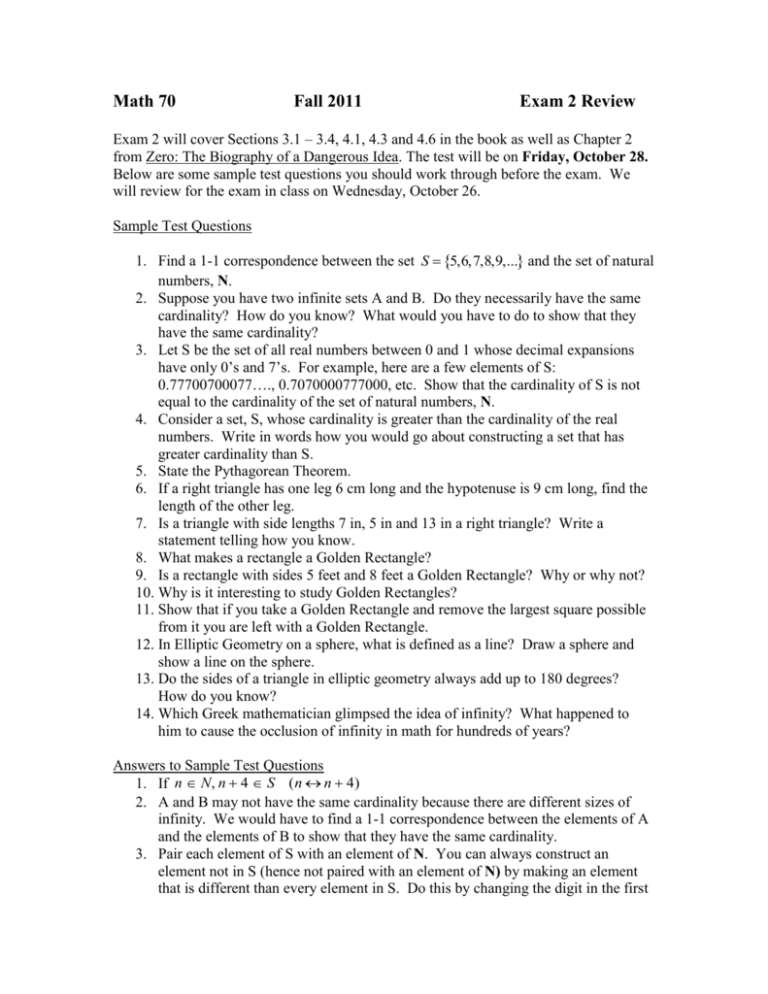
Math 70 Fall 2011 Exam 2 Review Exam 2 will cover Sections 3.1 – 3.4, 4.1, 4.3 and 4.6 in the book as well as Chapter 2 from Zero: The Biography of a Dangerous Idea. The test will be on Friday, October 28. Below are some sample test questions you should work through before the exam. We will review for the exam in class on Wednesday, October 26. Sample Test Questions 1. Find a 1-1 correspondence between the set S 5,6,7,8,9,... and the set of natural numbers, N. 2. Suppose you have two infinite sets A and B. Do they necessarily have the same cardinality? How do you know? What would you have to do to show that they have the same cardinality? 3. Let S be the set of all real numbers between 0 and 1 whose decimal expansions have only 0’s and 7’s. For example, here are a few elements of S: 0.77700700077…., 0.7070000777000, etc. Show that the cardinality of S is not equal to the cardinality of the set of natural numbers, N. 4. Consider a set, S, whose cardinality is greater than the cardinality of the real numbers. Write in words how you would go about constructing a set that has greater cardinality than S. 5. State the Pythagorean Theorem. 6. If a right triangle has one leg 6 cm long and the hypotenuse is 9 cm long, find the length of the other leg. 7. Is a triangle with side lengths 7 in, 5 in and 13 in a right triangle? Write a statement telling how you know. 8. What makes a rectangle a Golden Rectangle? 9. Is a rectangle with sides 5 feet and 8 feet a Golden Rectangle? Why or why not? 10. Why is it interesting to study Golden Rectangles? 11. Show that if you take a Golden Rectangle and remove the largest square possible from it you are left with a Golden Rectangle. 12. In Elliptic Geometry on a sphere, what is defined as a line? Draw a sphere and show a line on the sphere. 13. Do the sides of a triangle in elliptic geometry always add up to 180 degrees? How do you know? 14. Which Greek mathematician glimpsed the idea of infinity? What happened to him to cause the occlusion of infinity in math for hundreds of years? Answers to Sample Test Questions 1. If n N, n 4 S (n n 4) 2. A and B may not have the same cardinality because there are different sizes of infinity. We would have to find a 1-1 correspondence between the elements of A and the elements of B to show that they have the same cardinality. 3. Pair each element of S with an element of N. You can always construct an element not in S (hence not paired with an element of N) by making an element that is different than every element in S. Do this by changing the digit in the first decimal place of the first number in S to 0 if it is 7 and 7 if it is 0. Then change the digit in the second decimal place of the second number, then the digit in the third decimal place of the third number, and so on in the same way. 4. P(S) has cardinality greater than S. P(S) is constructed by taking all subsets of S as its elements. 5. The Pythagorean Theorem: In a right triangle with legs of length a and b, and a hypotenuse of length c, a2 b2 c2 . 6. 3 5 cm 7. No. If it were a right triangle, the legs and hypotenuse would satisfy the Pythagorean theorem. But, for a 2 b 2 7 2 5 2 49 25 74 169 c 2 . 8. The ratio of the longer base to the shorter height of a Golden Rectangle is 1 5 . 2 8 1.6 . It is almost a Golden Rectangle. 9. No. 5 10. Golden Rectangles appear in nature, are chosen as the “favorite” rectangle among a majority of people, and it is arguable that they appear in art and architecture, perhaps deliberately. 11. If we have a Golden Rectangle whose base is b and height is h and take out the largest square possible (h x h square), we are left with a rectangle with longer base h . We know that h and shorter height b - h. We need to show that bh 1 from Chapter 2. Here is one way to proceed: 1 b h b 1 1 h b h 1 h h bh 1 h h 1 b h 1 h bh 12. A line on a sphere is a great circle. 13. No. We can draw a triangle with three 90 degree angles. This triangle has 270 degrees. 14. Archimedes. He was killed by a Roman soldier.


